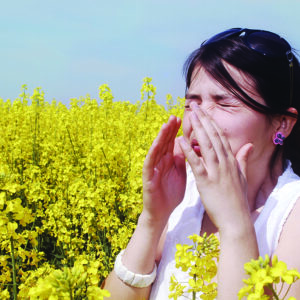
BRANTFORD – The upside of shining a light on a controversial topic like biosolids is that, under scrutiny, improvements are made and the industry cleans itself up or dies.
Wessuc is one of Ontario’s largest biosolid producers and applicators and at one time Kyle Morrison worked for Wessuc for a number of years and has done pretty well every stage of the process.
“I saw a lot of positive changes since I started there,” says Morrison. “As far as bio-solids is concerned, it really does work as one of the world’s most productive fertilizers. There isn’t much doubt about that. And I think Wessuc is one of the biggest and best that I know of.”
But, deep down, he still doesn’t like the idea of using it on food producing fields, or, near waterways, although the science has proven that used properly it is perfectly safe for human food production.
“The motto around there was ‘the solution to pollution is dilution,’” he says.
Morrison recalls an incident on a field near Ottawa where a spill occurred. A supervisor ordered him to unhook a large firefighter sized hose under full pressure. When he did he was covered and his waders were filled with sewage sludge and several gallons spilled on the ground before he could hook it back up. But even after that, Morrison still feels the use of biosolids, under strict guidelines and frequent random testing, is the best.
Jay VanVeen, a Wessuc representative informs the Two Row Times that newer studies, one in particular done at Queens University, has found different results with newer practices around the industry.
“These new studies have shown no risk,” says VanVeen.
In its own defence, Wessuc faces past practices head on.
“Despite over 30 years of research which show that, when conducted according to regulations, land application of biosolids is safe, concerns remain over soil and groundwater contamination from trace elements, toxic chemicals and potentially harmful disease causing organisms (pathogens),” according to the Wessuc Website.
“To date, there have been no documented negative human cases where a biosolids program met all the provincial requirements. The NMA provides specific requirements for nitrogen, phosphorus, metal and pathogen concentrations that must be met before biosolids can be land applied.”
Much of the concern about the use of biosolids is when it is being applied too close to waterways making leaching of the liquid human waste product into streams and rivers likely.
Wessuc states on their site that this is of paramount concern.
“The Nutrient Management Act provides minimum regulated standards to protect groundwater,” says Wessuc. “These standards are in place to prevent nutrients that are present in biosolids from leaching into ground water table through infiltration. The NMA states that there must be a depth of at least 0.9 meters of dry soil when applying biosolids to prevent nutrients from leaching into groundwater.”
However, according to a Court Bulletin released by the Ministry of the Environment and Climate Change, Wessuc was recently hit with a large fine under the Water Resources Act, in April of last year.
In that case, Wessuc Inc. was fined $105,000 for discharging sewage biosolids into a watercourse that may impair the quality of the water, contrary to the Ontario Water Resources Act (OWRA).
The media release states:
On October 11, 2011, a Non-Agricultural Source Materials (NASM) Plan was approved by the Ministry of Agriculture and Food (OMAF), for the land application of sewage biosolids to a Simcoe farm property on Concession 12. On April 27, 2012, the MOECC received notification from Wessuc that the sewage biosolid application would occur at the site, in accordance with the NASM Plan, between April 28 and May 5, 2012.
On April 30, 2012 and on May 2, 2012, ministry staff conducted sewage biosolid field inspections. During the May 2, 2012 inspection, Ministry staff observed a discharge of a dark-coloured liquid from the field’s drainage tile, which entered a stream heading south through a road culvert, and flowed downstream onto a property south of the roadway. An assessment of effluent samples determined that the application of liquid biosolids resulted in discharge of biosolids to an unnamed tributary of Black Creek, which impaired the quality of water in the creek.
Wessuc responded to the incident and cleaned up the spilled material at the Simcoe farm property. The ministry issued a Provincial Officer’s Order to Wessuc to prevent the reoccurrence of a similar event during the application of sewage biosolids on tile-drained fields in the future. The company was fined $105,000 plus a victim fine surcharge of $26,250 and was given one year to pay the fine.
What about the smell?
In 2013, organic growers Ella Haley and Richard Tunstall complained to the county about a contractor spreading treated sewage sludge on a field near their farm, “Heart’s Content.”
Wessuc defended itself saying, “The two farmers are clinging to lingering misconceptions about a product treated and released by municipalities, that is well-regulated by the Ministry of the Environment, and classified as a nutrient biosolid.”
But on their website they admit that the smell is still an issue.
“… odours associated with the land application of biosolids are considered more of a nuisance than a health problem. Odours are often times the most objectionable aspect of biosolids use on neighbouring farms.”
But qualifies, “All restrictions are conservatively set to prevent toxicity or health impacts in plants, animals and humans.”
According to Morrison, he believes that bans in Europe are based on different processes being used than here in Canada.
However, the list is quite long. That includes 20 counties in California alone. In January of 2014.
A CBC focus on biosolids in 2012 stated, “Sludge was recently classified as a nutrient, and the management of its use shifted to the Ministry of Agriculture from the Ministry of the Environment. That means it’s classified as a type of manure instead of treated under waste management rules.”
This may be another change that has helped the biosolids industry to sidestep certain negative media studies and help grow it, even under heavy scrutiny.









Processed Sewage Sludge (“bio solids”): A Major Source of Food and Water Contamination.
The land application of processed sewage sludge from municipal, hospital and industrial sources, plus
storm water runoff, generally called “safe” by the EPA and your local State Environmental Agencies, is a
lie when you consider “safe” means free from risk.
High concentrations of phosphates (Phosphorus = P) are found in sewage sludge, which is referred to as
“Class A and B Biosolids” by some and AB in Texas. Phosphate is excreted though feces and urine after
the digestion process, and flushed into the sewer system. Other contributors of P come from cleaning
(Trisodium Phosphate), which also ends up in the sewer.
Let us multiply just how many contributions by the US population X 365 flushes a year. (2016 US
Population 322,762,018 X 365)*. In addition, any particulate phosphorous can be turned into
phosphate by the anaerobic digestion phase of waste treatment. Now consider 25 years of, EPA CFR 40
503, dumping sewage on top of the ground on farms, forests and fields, and even consumer bags, and
you get a health and environmental nightmare that cannot be stopped because of the money involved.
Money.
* Note: It is estimated that each and every person in the US poops about 3 – 5 times per day and
flushes about 10 times per day.
Waste Water Treatment Plants (WWTP) cannot control the concentrations of, nor do they test for P, so
it is common for a field to be over burdened with phosphates and effluent which go directly into
surface and ground water. Commercial P applications can be controlled. Sewage Sludge or “bio‐solids”
sources of P cannot.
Look at your algae blooms to figure out where excess phosphates end up.
Q: What impact does phosphate have on the environment?
A: Phosphate supports the growth of plants, including algae. When too much phosphate is present,
excessive amounts of algae can develop. This may lead to undesirable water quality impacts, including
reductions in aquatic life, poor taste, and odors in drinking water.
Without any consideration of pathogens, let us add more chemicals to the mix.
Read a little known regulation 40 CFR 261.30(d) and 261.33 (4), every US industry connected to a
sewer can discharge any amount of hazardous and acute hazardous waste into sewage treatment
plants.
When the sewage industry tells you “pre‐treatment of these industrial chemicals are strictly
regulated,” read the EPA’s Office of Inspector General’s Report No.14‐P‐0363‐ 09/2014 where you will
instantly see they are BALD FACE PREVARICATORS!
(Just Google the Report number).
Now tell me what happens to those persistent hazardous chemicals when you heat them and mix
them together in a digester and send them out to a farm, forest or even in consumer product bags,
labeled as made from “bio solids.”
Chemicals that are persistent in the environment, bio accumulate in people and/or wildlife, and are
toxic, are called Persistent, Bio accumulative Toxic (PBTs). Because of these features, as long as they
remain in commerce and may therefore be released into the environment, they will threaten the
health of humans and wildlife. To make matter worse some algae blooms produce toxins such as
microcystin (a hemotoxin), phycotoxins, domoic acid, brevetoxin which are all neurotoxins for fish,
birds and other wildlife
Farmers and Consumers are being badly used to dump their municipal, industrial, hospital,
storm water, and household sewage on farms to save cities money, because of the cost to put it in a
landfill. They are not told all the facts so they can make an informed decision.
Money
Go figure.
You do not go to the industry that profits from disposing of “biosolids” on farmland to get information on its questionable safety … just as you do not go to Big Tobacco to inquire about the health risks associated with smoking … the truth will be found at arm’s length, with scientists not connected with BIG SLUDGE.